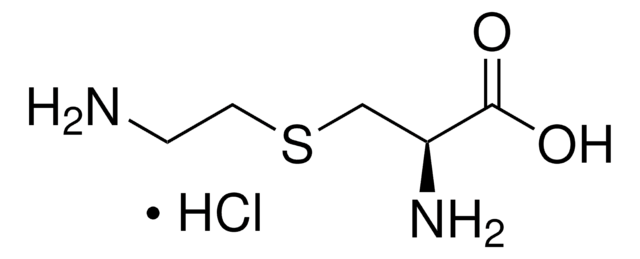F7129
5-Fluorocytosine
nucleoside analog
Synonyme(s) :
4-amino-5-fluoro-2(1H)-pyrimidinone, Flucytosine
About This Item
Produits recommandés
Pureté
≥99% (TLC)
Pf
298-300 °C (dec.) (lit.)
Spectre d'activité de l'antibiotique
fungi
Mode d’action
DNA synthesis | interferes
protein synthesis | interferes
Température de stockage
2-8°C
Chaîne SMILES
NC1=NC(=O)NC=C1F
InChI
1S/C4H4FN3O/c5-2-1-7-4(9)8-3(2)6/h1H,(H3,6,7,8,9)
Clé InChI
XRECTZIEBJDKEO-UHFFFAOYSA-N
Vous recherchez des produits similaires ? Visite Guide de comparaison des produits
Description générale
Application
Actions biochimiques/physiologiques
Mention d'avertissement
Warning
Mentions de danger
Conseils de prudence
Classification des risques
Repr. 2
Code de la classe de stockage
11 - Combustible Solids
Classe de danger pour l'eau (WGK)
WGK 2
Point d'éclair (°F)
Not applicable
Point d'éclair (°C)
Not applicable
Équipement de protection individuelle
Eyeshields, Gloves, type N95 (US)
Certificats d'analyse (COA)
Recherchez un Certificats d'analyse (COA) en saisissant le numéro de lot du produit. Les numéros de lot figurent sur l'étiquette du produit après les mots "Lot" ou "Batch".
Déjà en possession de ce produit ?
Retrouvez la documentation relative aux produits que vous avez récemment achetés dans la Bibliothèque de documents.
Les clients ont également consulté
Notre équipe de scientifiques dispose d'une expérience dans tous les secteurs de la recherche, notamment en sciences de la vie, science des matériaux, synthèse chimique, chromatographie, analyse et dans de nombreux autres domaines..
Contacter notre Service technique












